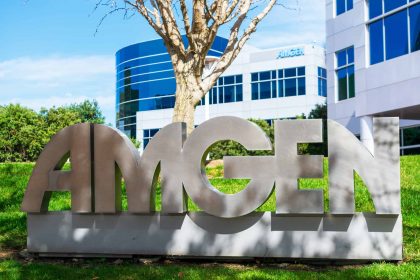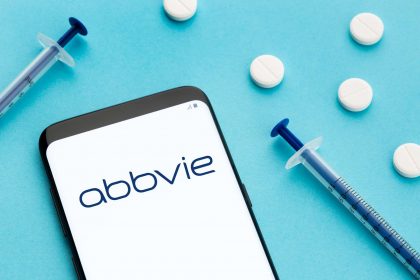For innovative Australian businesses, the R&D Tax Incentive can significantly reduce the cost of research and development activities. Yet, many companies either underclaim or miss out entirely due to confusion around what qualifies as eligible expenditure. This guide breaks down everything you need to know about the R&D Tax Incentive, what you can claim, what’s not eligible, and recent updates that could affect your claim.
Introduction to the R&D Tax Incentive Scheme
The Research and Development (R&D) Tax Incentive is an Australian Government program designed to encourage businesses to invest in innovation. Offered by the Australian Taxation Office (ATO) and AusIndustry, the program allows eligible companies to receive a tax offset for certain R&D activities conducted in Australia.
The scheme supports businesses of all sizes and across all industries. Whether you’re a startup developing software or a manufacturing company testing new materials, the R&D Tax Incentive can be a valuable financial boost.
Key benefits include:
- A 43.5% refundable tax offset for eligible entities with an aggregated turnover under $20 million.
- A non-refundable 38.5% tax offset for companies with turnover above $20 million.
What Counts as Eligible R&D Expenditure?
To qualify for the R&D Tax Incentive, your company must be conducting eligible core or supporting R&D activities, as defined under the Income Tax Assessment Act 1997. But what types of expenditure are claimable?
Eligible R&D expenses typically include:
- Employee salaries and wages directly related to R&D work.
- Contractor and consultant fees for R&D-specific services.
- R&D-related travel expenses, including site visits and testing trips.
- Depreciation of equipment used in R&D.
- Software costs used for development or testing.
- Prototyping and trial production.
- Overhead costs, such as rent or utilities directly supporting R&D activities.
Claiming the right expenses requires documentation and a clear link to R&D activities. Many companies benefit from working with an R&D tax advisor to ensure compliance.
Common Examples of R&D Tax Claims
Here are some real-world examples of eligible R&D expenditure:
- A biotech startup developing a new vaccine claims wages of lab staff, testing kits, and lab rental expenses.
- A software company designing a new AI feature claims salaries, cloud storage costs, and server infrastructure.
- A food manufacturer experimenting with sugar-free recipes claims material testing, ingredient sourcing, and batch production costs.
Each of these cases meets the criteria of having a hypothesis, systematic testing, and an unknown outcome — all essential elements of core R&D activity.
Exclusions: What You Can’t Claim Under the R&D Scheme
While the R&D Tax Incentive is generous, not all business expenses are eligible. Claiming non-qualifying costs can lead to audits and penalties.
Here’s what you cannot claim under the R&D Tax Incentive:
- Marketing, sales, or promotional costs.
- Routine quality control or standard business procedures.
- R&D conducted outside Australia (unless specific approvals are in place).
- Interest expenses and general banking fees.
- Training costs not directly tied to R&D experimentation.
- Capital works (e.g., buildings and land).
The ATO also discourages double dipping — claiming the same expense under different government programs.
Latest Updates and Government Support Programs
Recent developments and funding initiatives complement the R&D Tax Incentive. Here are the most relevant ones for innovative businesses:
Transparency in R&D: ATO’s Latest Report Insights
The R&D Tax Incentive Transparency Report, released by the ATO, provides data on which companies are claiming R&D tax benefits and in what amounts. This is part of an effort to improve compliance and discourage fraudulent claims.
The report highlights:
- Industries most active in R&D claims (e.g., ICT, pharma, manufacturing).
- Trends in claim sizes and offsets received.
- Increased ATO scrutiny on inflated or ineligible claims.
Businesses are now encouraged to maintain clearer documentation and align R&D efforts with actual innovation outcomes.
NSW MVP Ventures Program: Boosting Early-Stage Innovation
The Minimum Viable Product (MVP) Ventures Program is a NSW government grant designed to support startups commercialising early-stage products. While separate from the R&D Tax Incentive, businesses can potentially combine both for maximum funding.
Eligible applicants can receive up to $200,000 in matched funding to develop and test prototypes. If your MVP stage includes experimentation, the R&D costs may also be claimed under the incentive.
Queensland’s Business Growth Fund: Support for High-Growth Companies
Queensland companies can take advantage of the Business Growth Fund (Round 6), aimed at high-growth, job-creating businesses. While not directly tied to R&D, the fund supports projects that may involve innovation, system improvements, and tech adoption — some of which may overlap with R&D-eligible activities.
Companies receiving grant funding should ensure there’s no overlap with R&D claims to avoid duplication.
Final Thoughts: How to Maximise Your R&D Tax Return
Claiming the R&D Tax Incentive can lead to significant savings, but to get the most out of it, your business needs to be strategic and compliant.
Here are some tips:
- Keep detailed records of experiments, staff hours, and associated costs.
- Map R&D activities clearly with a defined hypothesis and objectives.
- Use the right software for tracking and project management.
- Stay updated on ATO guidelines and new compliance expectations.
- Consult an R&D tax advisor to review and refine your claim.
Innovation is at the heart of business growth, and with the right approach, the R&D Tax Incentive can reward your risk-taking.
Need help with your R&D Tax Incentive claim?
Working with experts can streamline the process, reduce audit risk, and help you identify opportunities you might have missed.








